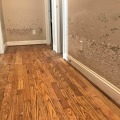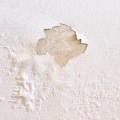Water damage can be a major problem for homeowners, leading to costly repairs and renovations. It can also cause health hazards due to mold growth, and can even reduce the home appraisal value if not addressed in a timely manner. Fortunately, there are steps that can be taken to restore water damage and prevent it from happening again. In this article, we'll discuss the process of restoring water damage, the benefits of using water-based stains, and how to choose the right product for your needs. When it comes to restoring water damage, the first step is to identify the source of the problem.
This could be a leaky pipe, a broken appliance, or even a natural disaster. Once the source has been identified, it's important to take timely action to prevent further damage. This may involve calling a professional technician or disaster restoration company to assess the situation and provide a plan of action. The next step is to repair or rebuild any damaged areas. This could involve replacing drywall, flooring, or other materials that have been affected by water damage.
It's also important to check for hazardous materials such as mold or asbestos that may have been exposed due to the water damage. If any hazardous materials are found, they should be removed and disposed of properly. Once the repairs have been made, it's important to take steps to prevent future water damage. This could include installing vents or ducts in areas prone to moisture buildup, as well as checking appliances for leaks or other signs of water damage. Additionally, it's important to waterproof any exterior improvements such as decks or patios. In addition to preventing future water damage, homeowners should also consider using water-based stains on their wood surfaces.
Water-based stains are a great way to protect wood from moisture while still allowing it to breathe. They are also much easier to apply than oil-based products and dry much faster. Popular brands such as Minwax and General Finishes offer a wide range of water-based wood stains in various colors. When applying a water-based stain, it's important to follow the manufacturer's instructions carefully. This includes allowing enough drying time between coats and ensuring that the temperature and humidity levels are within the recommended range.
Once the stain has dried completely, it's important to seal it with a polyurethane layer for added protection. In addition to protecting wood surfaces from moisture, water-based stains can also help increase the home appraisal value by improving its overall appearance. Homeowners should consider nearby features such as landscaping or exterior improvements when choosing a stain color that will complement their home's market value. Restoring water damage can be a daunting task for homeowners without expert knowledge and timely response. It's important to take action quickly in order to prevent further damage and reduce health hazards due to mold growth. By taking steps such as repairing damaged areas, waterproofing exterior improvements, and using water-based stains on wood surfaces, homeowners can restore their home back to its original condition and protect it from future water damage.
However, not all instances of water damage can be remediated by a homeowner, when disaster strikes and water flows, you need to call a professional water damage removal firm quickly who is experienced and trained in this area, to mitigate issues caused by water sitting for too long or getting into areas it's not meant to.


